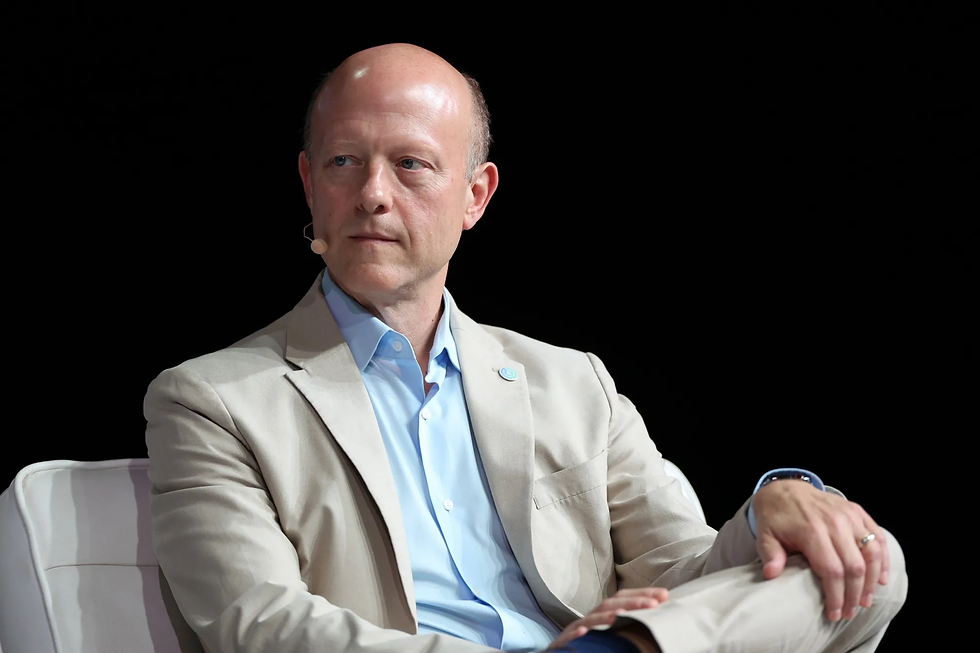Circle & Finastra: When Banking Rails Meet Stablecoin Speed
- Trevor Johnson
- Sep 2
- 4 min read
Writer: Trevor Johnson
September 2, 2025

On a Friday afternoon in Lagos, a small logistics firm pushes a $30,000 payment to a supplier in London. The invoice isn’t controversial, the counterparty is known, and the due date is tight. Then the familiar friction kicks in. The transfer moves from one correspondent bank to another, pauses for checks the sender can’t see, and accumulates fees the receiver never agreed to. By Wednesday, the funds finally land—short a few hundred dollars—with no satisfying answer for where time and money disappeared.
Multiply that story by millions and you get the global cross-border system as it exists today. The World Bank’s own tracker puts average remittance costs near 6.5% and confirms that many corridors still suffer days-long settlement and opaque fees.
This week’s Circle–Finastra announcement offers a solution. Finastra—the banking software heavyweight whose payment hubs already move trillions a day—will wire its Global PAYplus (GPP) platform to Circle’s infrastructure so banks can settle international transfers in USDC while keeping fiat-denominated payment instructions, FX steps, and reporting exactly where compliance teams expect them. Finastra describes the result as giving banks “the tools they need to innovate in cross-border payments without having to build a standalone payment processing infrastructure,” as CEO Chris Walters put it.
If you’ve spent years around payments, the significance lands immediately. Settlement is where speed, cost, and risk live. For decades, banks have modernized UIs and messaging, but the value actually changes hands through long chains of correspondent relationships. The Circle–Finastra build repositions that handoff: settlement happens on public blockchains using a regulated, fully-reserved stablecoin—USDC—while banks continue to run KYC, sanctions, and reporting inside their existing hubs. Finastra says GPP customers process over $5 trillion in cross-border transactions daily; now those flows gain a stablecoin settlement lane without jeopardizing compliance standards.

“Finastra’s reach and expertise in powering the payments infrastructure for leading banks worldwide makes them a natural choice to further expand USDC settlement in cross-border flows,” Circle co-founder & CEO Jeremy Allaire said, capturing the distribution logic here. Finastra serves 8,000+ customers, including 45 of the top 50 banks across more than 130 countries. Pair that footprint with Circle’s stablecoin stack and you get immediate scale where it matters: inside bank cores that already pass audits.
Why these two—and why now
To understand why this partnership snapped into place in 2025, follow the regulatory breadcrumbs and the product roadmaps.
Finastra’s rails: GPP is an ISO 20022-native hub designed to centralize multi-rail payments and simplify compliance. That standard isn’t just a messaging facelift; the richer data fields improve sanctions and AML screening quality. Finastra highlights that shift in its ISO 20022 materials and offers pre-packaged screening (including its Total Screening solution and a partnership with Fincom.co) to reduce false positives and speed investigations—exactly the operational pressure points that can stall cross-border flows.
Circle’s rails: 2024–2025 were about regulatory hardening and distribution. Circle became the first global stablecoin issuer MiCA-compliant in the EU via a French EMI license, meaning USDC and EURC are now issued under Europe’s stringent e-money rules. In Singapore, Circle holds a Major Payment Institution license covering digital payment tokens and cross-border money transfer. In April 2025, Circle rolled out the Circle Payments Network (CPN) to link financial institutions for real-time settlement using regulated stablecoins. The June 2025 IPO (ticker: CRCL) put an additional spotlight on governance and transparency. Each milestone mattered for bank adoption.
Layer on the U.S. GENIUS Act, signed in July 2025, which set federal guardrails for payment stablecoins—reserve quality, disclosures, and AML expectations. Banks needed clarity before they’d use stablecoins in production cross-border flows; policymakers finally delivered a framework that makes procurement and risk committees more comfortable.
Taken together, you can see why GPP + USDC makes sense. Finastra brings the trusted pipes and compliance muscle inside banks. Circle brings a regulated settlement asset, auditability, and a network designed for real-time value transfer. As Allaire framed it: the models “combine blockchain technology with the scale and trust of the existing banking system.”
How the flow actually changes

With the integration live, a bank can originate an international payment in its usual interface. The payment instruction remains in fiat (and in the language risk teams understand). Behind the scenes, the bank chooses a USDC settlement path for the value transfer. FX can happen at the edges, compliance screening happens where it always has, and the final movement of value is near-instant over public blockchains. The beneficiary bank receives the funds and credits the fiat account. The net result for customers is fewer “funds in flight” and better predictability.
Finastra sums up the benefit plainly: GPP “simplifies the IT and payments architecture” and lowers total cost of ownership by centralizing multi-scheme processing—now including a stablecoin option.
“This collaboration is about giving banks the tools they need to innovate in cross-border payments without having to build a standalone payment processing infrastructure.” — Chris Walters, CEO, Finastra
“Together, we’re enabling financial institutions to test and launch innovative payment models that combine blockchain technology with the scale and trust of the existing banking system.” — Jeremy Allaire, Co-founder & CEO, Circle
Where this goes next
Expect a period of progressive adoption inside GPP banks: targeted corridors, controlled volumes, and use cases like supplier payouts, marketplace settlements, and high-value remittances. The most pragmatic implementations will keep controls centralized—GPP for orchestration and screening, USDC for settlement, auditors for verification.
The throughline in all of this isn’t that crypto replaces banking. It’s that our existing banking infrastructure finally gains a real-time, programmable settlement asset that satisfies regulators and finance chiefs alike. Rather than tearing down existing infrastructure, Circle and Finastra have reinforced it with modern settlement technology. And for the people still waiting days for money to arrive, that change can’t come soon enough.




Comments